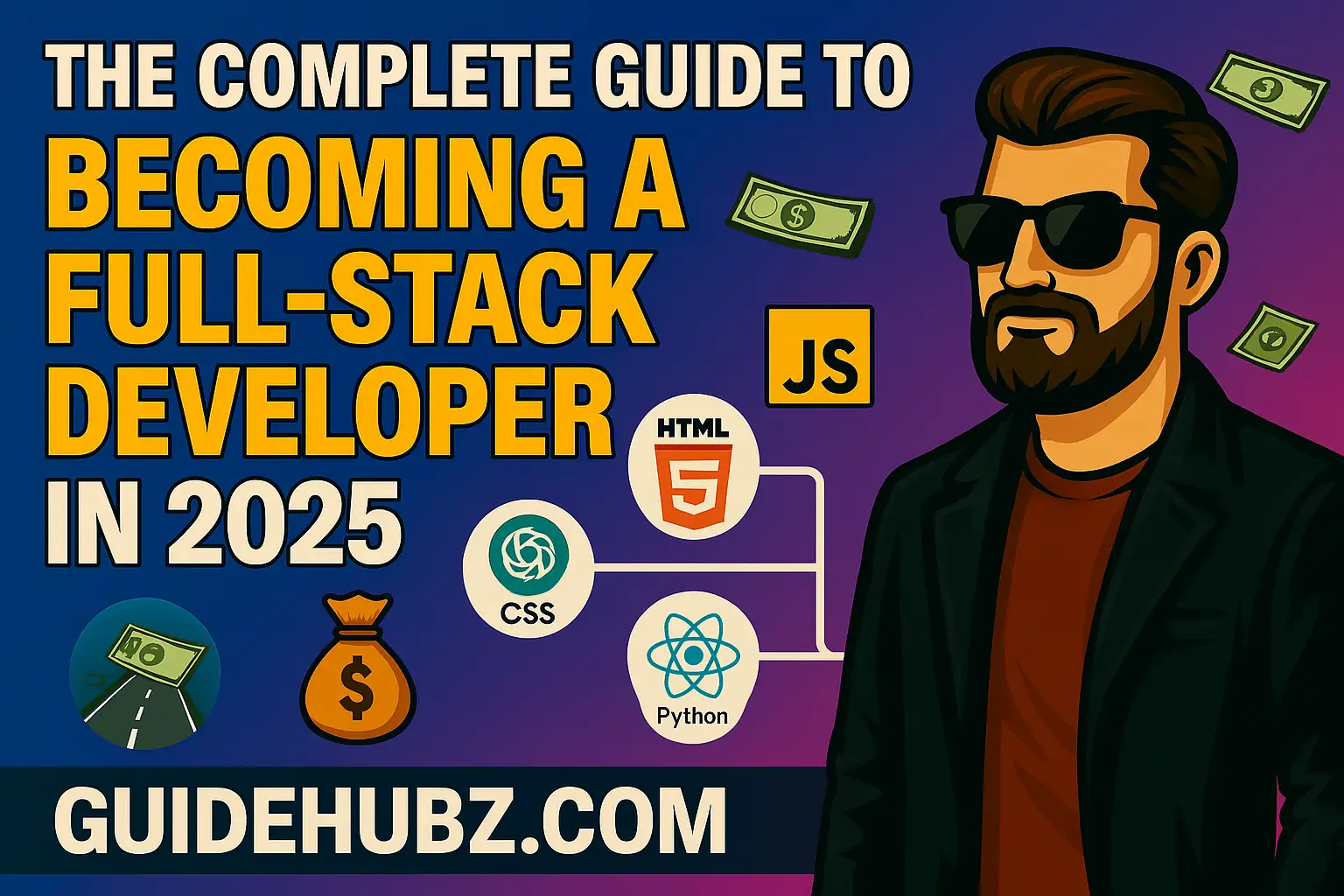In today's rapidly evolving tech landscape, full-stack developers are in higher demand than ever before. These versatile professionals who can handle both front-end and back-end development are invaluable assets to any tech team. If you're looking to launch or advance your career as a full-stack developer in 2023, this comprehensive guide will walk you through everything you need to know.
What is a Full-Stack Developer?
A full-stack developer is a software engineer proficient in working with both the front-end (client-side) and back-end (server-side) portions of web applications. They understand how to:
- Create interactive user interfaces
- Design and implement server-side logic
- Work with databases and APIs
- Ensure optimal performance and security
- Deploy applications to production environments
Pro Tip: Full-stack developers don't necessarily need to be experts in every technology, but they should have working knowledge of all layers in the application stack and understand how they interact.
Essential Skills for Full-Stack Developers in 2023
Front-End Technologies
The front-end is what users see and interact with. Key technologies include:
- HTML5 & CSS3: The building blocks of web pages
- JavaScript (ES6+): The programming language of the web
- React.js/Vue.js/Angular: Popular JavaScript frameworks
- Responsive Design: Creating sites that work on all devices
- CSS Preprocessors: Sass or Less for more maintainable CSS
Back-End Technologies
The back-end handles business logic, database interactions, and server configuration:
- Node.js/Python/Java/Ruby/PHP: Server-side programming languages
- Express.js/Django/Spring/Rails/Laravel: Back-end frameworks
- RESTful APIs/GraphQL: Creating and consuming APIs
- Authentication & Authorization: JWT, OAuth, sessions
Database Management
Full-stack developers need to work with databases:
- SQL Databases: PostgreSQL, MySQL, SQL Server
- NoSQL Databases: MongoDB, Firebase, Cassandra
- ORM/ODM: Sequelize, Mongoose, TypeORM
DevOps & Deployment
Modern full-stack developers should understand:
- Git & GitHub/GitLab: Version control
- Docker & Kubernetes: Containerization
- CI/CD Pipelines: Automated testing and deployment
- Cloud Platforms: AWS, Azure, Google Cloud
Learning Path to Become a Full-Stack Developer
1. Master the Fundamentals
Start with HTML, CSS, and JavaScript. Build simple static websites before moving to dynamic applications.
2. Choose a Front-End Framework
React.js is currently the most popular choice, but Vue.js and Angular are also excellent options.
3. Learn a Back-End Language
Node.js (JavaScript) is great for beginners since you can use the same language on both ends. Python (Django/Flask) is another beginner-friendly option.
4. Understand Databases
Start with a relational database like PostgreSQL, then explore NoSQL options like MongoDB.
5. Build Full-Stack Projects
Combine all your knowledge to create complete applications. Some project ideas:
- Task management app
- E-commerce site
- Social media dashboard
- Blog platform with user authentication
6. Learn Deployment and DevOps
Deploy your projects using platforms like Heroku, Netlify, or Vercel. Learn basic Linux commands and server management.
Learning Tip: Focus on understanding concepts rather than memorizing syntax. The ability to learn and adapt is more valuable than any specific technology.
2023 Full-Stack Developer Roadmap
Here's a suggested learning timeline:
Months 1-3: Front-End Foundations
- HTML5 semantic markup
- CSS3 with Flexbox and Grid
- JavaScript fundamentals (ES6+)
- Basic DOM manipulation
Months 4-6: Front-End Framework
- React.js or Vue.js
- State management (Redux/Vuex)
- Component-based architecture
- API consumption with Axios/Fetch
Months 7-9: Back-End Development
- Node.js with Express.js
- RESTful API design
- Database integration
- Authentication systems
Months 10-12: Advanced Topics
- TypeScript
- GraphQL
- Testing (Jest, Mocha)
- Deployment and DevOps
Sample Full-Stack Application Code
Here's a simple Express.js server with React front-end integration:
// Backend (server.js)
const express = require('express');
const app = express();
const PORT = 5000;
app.use(express.json());
app.get('/api/data', (req, res) => {
res.json({ message: 'Hello from the backend!' });
});
app.listen(PORT, () => {
console.log(`Server running on port ${PORT}`);
});
// Frontend (React component)
import React, { useEffect, useState } from 'react';
function App() {
const [data, setData] = useState('');
useEffect(() => {
fetch('/api/data')
.then(res => res.json())
.then(data => setData(data.message));
}, []);
return (
<div>
<h1>Full-Stack App</h1>
<p>{data}</p>
</div>
);
}
export default App;Career Opportunities for Full-Stack Developers
Full-stack developers can pursue various career paths:
- Web Developer: Build and maintain websites and web applications
- Software Engineer: Work on complex software systems
- Freelance Developer: Take on projects for multiple clients
- Technical Lead: Oversee development teams
- Startup Founder: Build your own products
Staying Relevant in 2023 and Beyond
To maintain your edge as a full-stack developer:
- Follow industry blogs and newsletters
- Contribute to open-source projects
- Attend tech conferences and meetups
- Experiment with new technologies
- Focus on problem-solving skills



